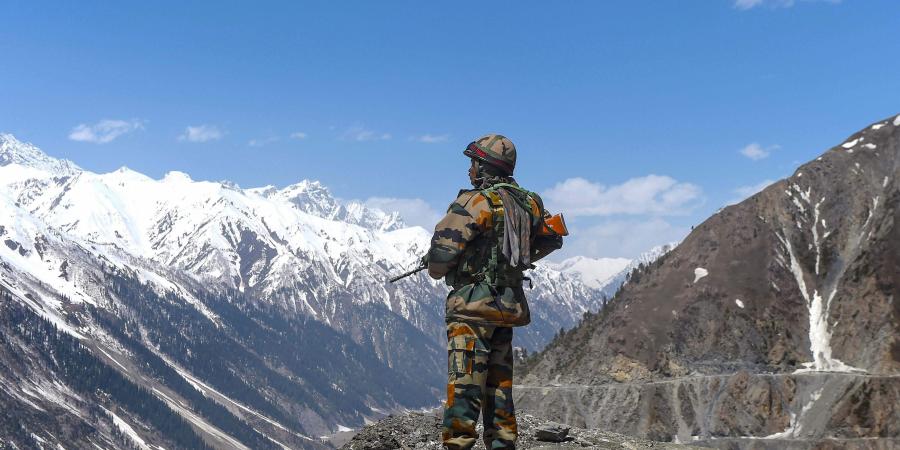New Delhi, November 08:
India and China have hardened their stance on the Line of Actual Control (LAC) in eastern Ladakh, going by increased military activities on both sides of the boundary, infrastructure development, surveillance and combat manoeuvres by their armies in the midst of the ongoing border standoff in the sensitive sector, China watchers said on Sunday, four weeks after military talks to cool Ladakh tensions reached an impasse.
Military talks are unlikely to result in a breakthrough and only higher intervention can show the way to resolving the 18-month-old border crisis, said one of the people cited above. The Indian Army’s activities in the sector are in response to the People’s Liberation Army’s (PLA) actions and countermeasures have been taken to stay ready for any contingency, said a second official.
Despite two rounds of disengagement at friction points on the LAC this year, the two armies still have 50,000 to 60,000 troops each and advanced weaponry deployed in Ladakh. In a report released last week, the US defence department said Beijing was taking “incremental and tactical actions to press its claims” at LAC, despite participating in talks to resolve the crisis.
It is quite obvious that positions on both sides have hardened and the statements from India and China after the 13th round of military-level talks are a clear indication that finding common ground is difficult, said former Northern Army commander Lieutenant General DS Hooda (retd).
“Any breakthrough in the deadlock will now have to come at the political and diplomatic level. However, it is uncertain whether there is a desire in either country to undertake such initiatives at this stage,” he added.
PLA did not agree to suggestions made by the Indian Army at the 13th round of talks on October 10. The Indian Army said it made constructive suggestions for resolving the remaining areas but the Chinese side was not agreeable and also could not provide any forward-looking proposals, while China accused India of unreasonable and unrealistic demands in an unusually aggressive statement.
PLA carried out tank drills across LAC after the October 10 talks hit an impasse, and the Indian Army launched an airborne exercise in eastern Ladakh last week to validate and showcase its rapid response capabilities.
There’s been a visible hardening of attitudes on both sides but talks are still on, said Lieutenant General SL Narasimhan (retd), a China expert and member of the National Security Advisory Board. “The fact that the military dialogue is still on indicates that things could progress, provided there is peace and tranquillity along the border,” Narasimhan said.
There is no end in sight to the standoff, with army chief General Manoj Mukund Naravane stating on October 9 that if PLA is there to stay in the Ladakh theatre, so is the Indian Army. He was referring to the military buildup and infrastructure development by the neighbouring army across LAC.
PLA has taken a hard line on LAC and India is taking countermeasures to defend its interests, said former Northern Army commander Lieutenant General BS Jaswal (retd). “We want to retain a position of strength to thwart any designs of the adversary,” Jaswal said.
Asked to comment on PLA’s intentions given its aggressive moves in the northern sector, Naravane last month said: “I wish I knew. The most difficult thing is to get into your adversary’s mind. But whatever those reasons may have been, I don’t think they have been able to achieve their aims because of the rapid response by the Indian armed forces.”
Highlighting Chinese attempts to continue pressing its claims at LAC, the US defence department report pointed to a large 100-home civilian village China has constructed “inside disputed territory” between Tibet and Arunachal Pradesh.
Eastern Army commander Lieutenant General Manoj Pande last month flagged concerns about the “dual use” of villages being set up by China in forward areas, and said the army was factoring in the development in its operational planning.
PLA has also intensified patrolling in sensitive areas across LAC in Arunachal Pradesh after the lingering standoff with India began last year in the Ladakh sector. It has ramped up area domination patrols for surveillance and orientation of newly inducted troops with a noticeable increase in visits by senior PLA officers to forward areas to supervise the military activities in the eastern sector.
In the Ladakh sector, outstanding problems at Hot Springs and Depsang are yet to be resolved. The Indian Army’s patrolling activity has been affected in Hot Springs (Patrolling Point (PP)-15) and PLA’s forward presence in Depsang has also hindered access of Indian soldiers to routes including the ones leading to PP-10, 11, 11-A, 12 and 13.
Even as the border row lingers, the department of military affairs (DMA), headed by chief of defence staff (CDS) General Bipin Rawat, last week asked the three services to expedite their ongoing studies on the creation of threatre commands to best utilise the military’s resources for future wars and operations, and submit comprehensive reports within six months.
The deadline for submitting the reports has been advanced from September 2022 to April 2022.





